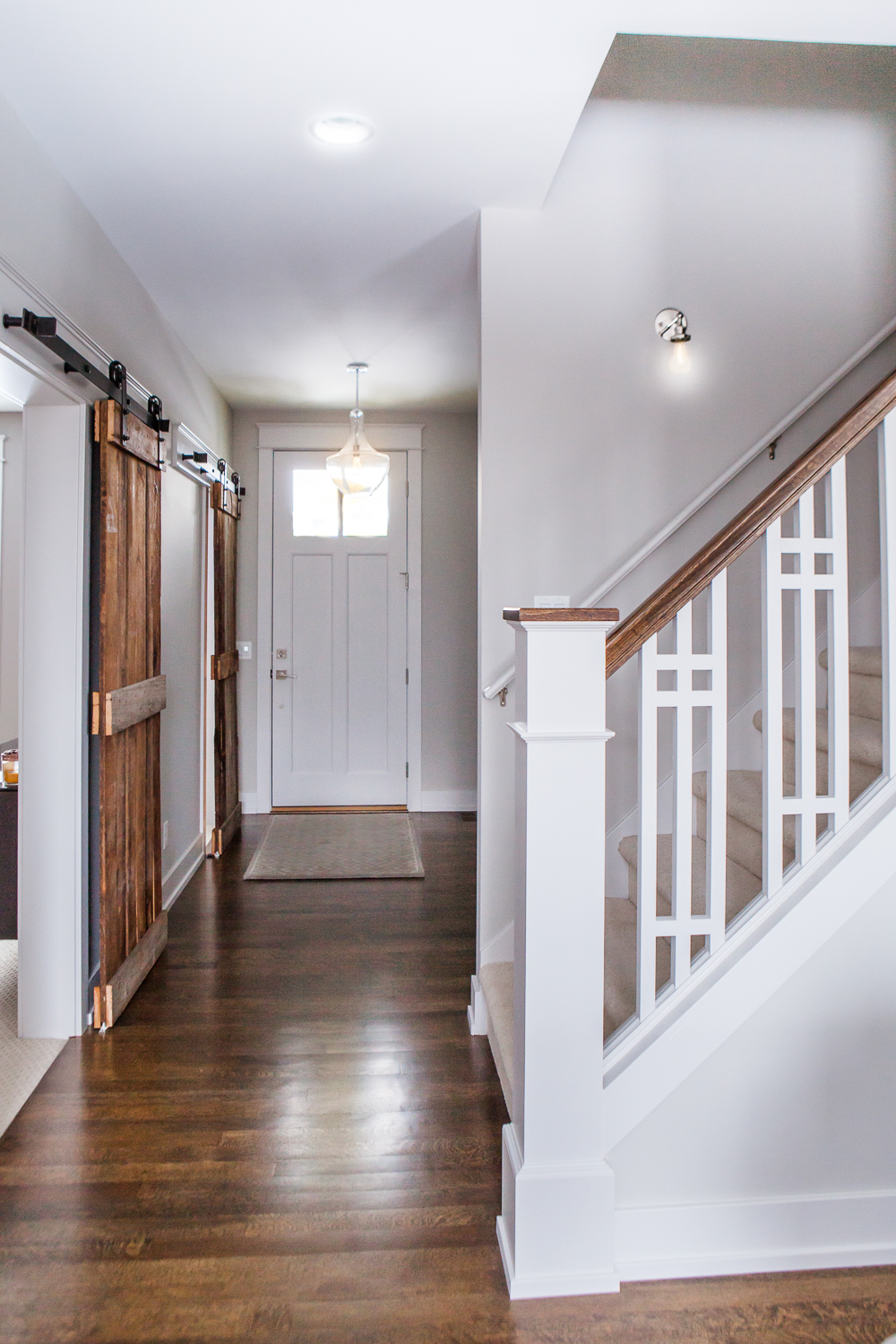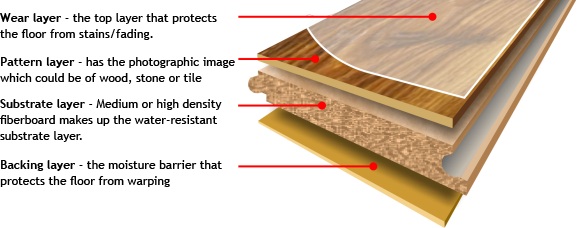If you’ve replaced wood flooring in your home over the last 5 years or you’ve built a new home, you know the struggle. The flooring stores are packed with 4,000 different options, and navigating the difference between solid, engineered, and laminate while choosing the option that best fits your lifestyle and budget can be quite overwhelming. So - what’s the difference between the three?
Solid Hardwood Flooring 101
Solid hardwood flooring is cut from a single piece of wood and the thickness varies. How the surface is treated can affect how it looks, but it’s available in pre-finished and unfinished so you can tailor a solid wood floor to the exact color you want if you go the unfinished route. It’s not recommended to install solid hardwood flooring below grade in a lower level due to the moisture of the subfloor which is typically concrete. In the mid-west, where the interior relative humidity can significantly fluctuate throughout the year, it’s not uncommon for solid hardwood flooring to grow and shrink depending on the season. Summer humidity increases the swell of solid hardwood flooring, whereas forced heat in the winter dries wood out and causes it to shrink. For this reason, it’s important to acclimate solid hardwood flooring to the interior humidity where it will be installed prior to installation and leave a gap for growth around the perimeter of the space (to be concealed with shoe molding) so the flooring does not cup as it grows.
A "traditional" solid hardwood installation uses uniform widths of strip wood flooring, whereas a "contemporary" or "rustic" wood floor uses random widths of strip and/or plank wood flooring. Solid hardwood flooring offers a timeless look often found in historic homes, and it’s safe to say - it never goes out of style.
If using unfinished solid hardwood flooring, know that it will need to be sanded, stained, and then finished with a surface finish urethane or a penetrating finish and wax on site. One thing to consider is finished hardwood floors typically have a longer manufacturer warranty and are generally longer lasting and more durable than site finished floors, so look into warranty information when choosing between the two. Typically, solid hardwood flooring is the most expensive option, but that can vary depending on species, design, and installation cost.
Engineered Hardwood Flooring 101
Engineered hardwood flooring is often grouped with laminate flooring, but don’t confuse the two! Even though both are manufactured floors, engineered hardwood flooring is surprisingly durable and perfect for zones with fluctuating humidity. It is also more dimensionally stable than solid hardwood flooring thanks to its multi-ply construction consisting of a thick top layer of actual solid hardwood, an inner core of alternating high density material and a hardwood backing. This tiered construction means it’s less likely to react to changes in temperatures and humidity.
Image courtesy of Carolina Wood Floors
Since the top layer is solid hardwood, this versatile design allows for most engineered hardwood to be sanded and refinished 1-2 times over the years and gives you the option to install just about anywhere in your home including a lower level. However, the top layer can vary in thickness from .6mm-6mm, where the thicker the top layer, the better it will hold up over time and the more it can be sanded down and refinished.
Laminate Flooring 101
While laminate flooring has a stereotype of easily scratching and not being a super durable option, it has come a long way over the years. Like most products, there is a wide range of durability depending on which laminate flooring you choose, but some are even commercially rated for high traffic public areas at an affordable price point.
Often, you can achieve a similar look as engineered or solid hardwood, and depending on your budget and durability priorities, laminate might be the option for you. So, what’s the difference? Laminate wood flooring has a paper or plastic image of wood laminated to a substrate, so unlike engineered and solid hardwood, the top layer is not real wood grain, but rather printed, so it cannot be sanded down and refinished. Most laminate flooring consists of four layers: a clear top wear layer with stain (and possible scratch) resistance, a photographic printed wood grain layer or wood veneer layer, high-density core providing dimensional stability, and a backing layer that guards against moisture from the subfloor.
With a high-end laminate floor, it can be installed anywhere in your home including a lower level. All layers are fused under high pressure to form a strong board that resists scratches, stains, warping and buckling. The clear top layer is very important to determine the durability and scratch resistance to high traffic areas, and this layer is often the difference between a $2/sq ft laminate floor and a $8/sq ft laminate floor. Per usual, you get what you pay for, but generally speaking, laminate flooring is the least expensive wood flooring option.
Which wood flooring option do you have in your home? Have you been happy with the durability over time?







